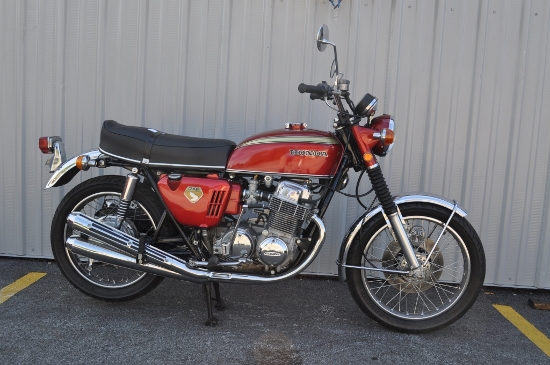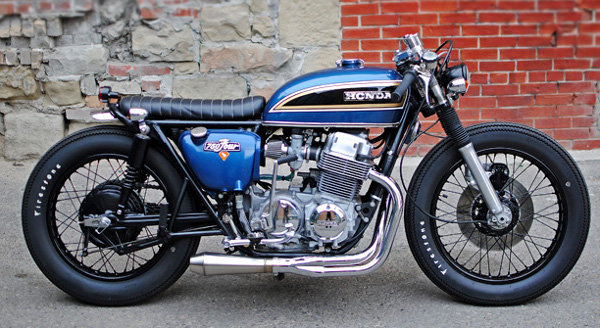Bike of the week - it's the Honda CB750
Happy as a sandcast boy
We have a genuine star of its day as our bike of the week this week - just for starters the term superbike was supposed to have been coined as the moniker for this bike which tells a story in itself. A groundbreaker of the time, the 1969 Honda CB750 was the bike to have and there are still plenty around today, a testament to its quality. It was the first modern four cylinder machine to emerge from a mainstream manufacturer and offered a multitude of features on top of its unique transverse straight four engine.
It was first released for the US and European markets in 1969 after Soichiro Honda, that great entrepreneur, recognised a gap in the market for larger bikes particularly in the US.

Sandcast CB750
After testing and a year of development the CB750 was still such a new and untested concept that Honda was not sure how it would be received so decided to play safe. In order not to spend too much on production in case the bike did not take off with the public, Honda started churning them out with sandcast crankcases rather than graduating to the more usual diecasting which was used for greater production runs. They needn't have worried – the CB750 proved to be such a huge success that around 553,000 bikes rolled out of the factory before its eventual demise in 2007.
Dream machine
One of the added bonuses of the CB750 was that because it was a mainstream production bike it was in touch price-wise so that normal humans could afford to own the dream, their very own superbike.
All in all the CB750 turned out to be a great success story due to a combination of factors not the least of which were that, for the time it had a superb engine and had undergone extreme durability testing by Honda to make sure that it was truly tough. It could reach a top speed of 120mph, had excellent brakes, a great instrument panel and was extremely comfortable – perfect - the public loved it. Obviously judging it by modern standards early CB750s might feel heavy or underpowered but considering the opposition at the time ... it blew them all away for quite a few years.
The engine was the star of the big beating motorcycle heart, a huge mass consisting of four cylinders with a single overhead cam (although later models from 1979 had DOHC) and four carbs with two coils fired by a double points system. The engine provided around 67bhp – plenty of power. And it had a five speed gearbox with a down for down left -side gearshift pattern not your average right-side gear change of a British bike. At the time the MCN bike of the year was the Norton commando, a bike which vibrated like the end of the world at speed. In the 70s there still lingered a strongly voiced opinion that the “riceburner” japanese motorcycle was somehow not built to last, and was a cheaply made consumable item. Real men rode leaky unreliable cast iron steamhammers designed in the 1930s. Attitudes have changed - the early sandcast CB750s now have a sought after classic cachet .
This monster was a workhorse, totally bomb proof and completely reliable starting every time and quickly gaining a justified reputation for speed and trustworthiness. The rider could ride all day and the CB750 never missed a beat and it was still ready for action at the end of the day. It left no greasy puddles ( thanks to its horizontally split engine cases and great machining tolerances) and it didn't break down – quite a revelation for the time. The motorcycling public who were used to British bikes which generally required a full tool kit to be carried around in case of breakdowns and left their oil slick calling cards on many a kerb, received the CB750 with delight.
In 1975 a sport version was born the F1 – it didn't have a huge amount of differences flatter handlebars and a top speed of 125mph were notable also it ha second disc at the back which was better than the original front one.
Later the F2 appeared which had a few modifications like a double disc front end which actually stopped the bike. The drive chain also went from 530 to 630.
So if all this has whetted your appetite then never fear, they are still plentiful today - of all the Honda CB750s made, many still survive and many can be bought relatively cheaply, and groomed into a cool ride.
Wemoto

